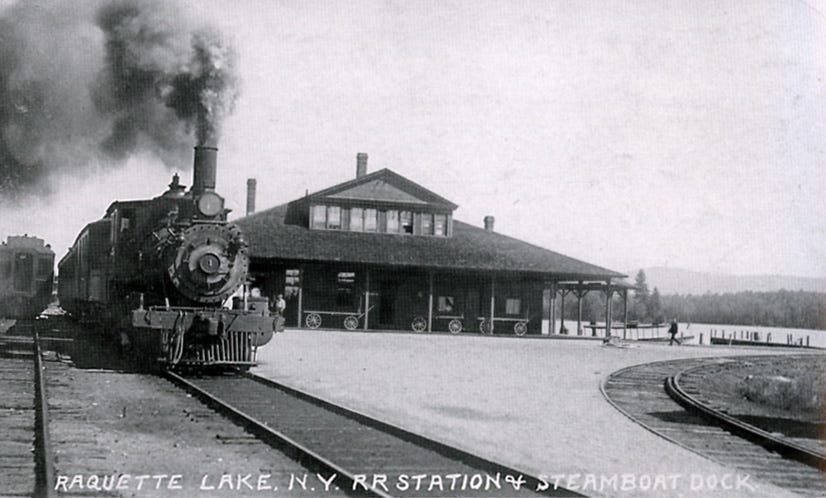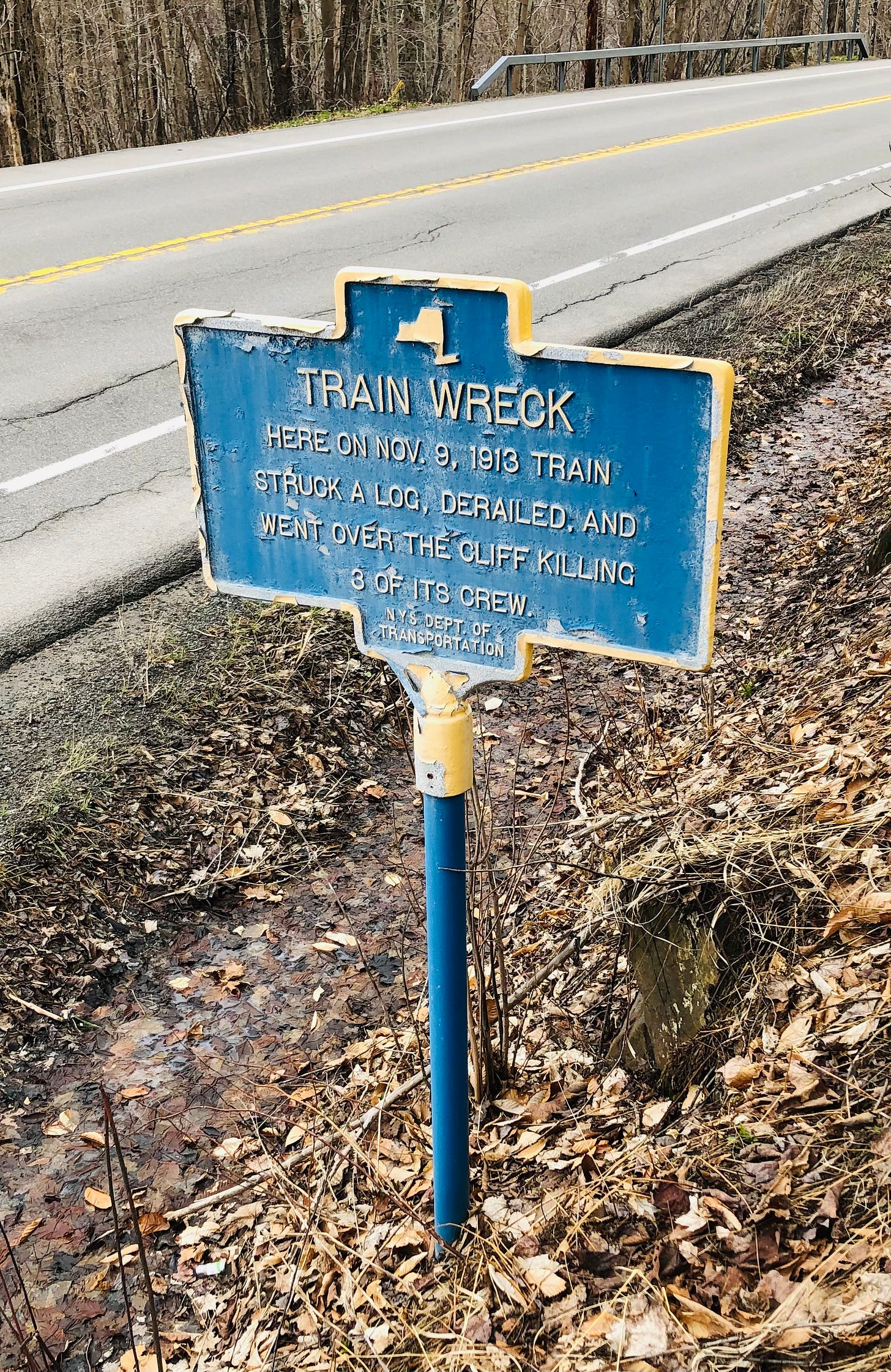High above Fulton Chain Lakes in the Adirondacks, and mostly hidden about ten feet off state route 28, the remains of the Raquette Lakes Railroad is little more than a sandy rail trail these days. In the winter, the old route becomes a snowmobile trail.
I wouldn’t have even know it was there if not for a bright blue historic marker, just past the entrance of the lodge where I was staying.
With nowhere to park along the busy route near the fading sign, I hoofed it up from the lodge and walked about a tenth of a mile along the rail trail to even get close enough to read the sign. And even then, for a historic marker, there sure isn’t much information about the sad wreck and the three men who perished.
Well, you can read it yourself here -
As it turns out, this was the famous wreck of the Raquette Lakes Railroad on a stormy and cold night in November 1913. The line was famous for carrying tourists throughout the lakes region, but on this evening, the locomotive was pulling a heavy wrecking train when a gust of wind blew a huge tree down in its path. The engineers were unable to stop the heavy train in time, striking the tree and sending the locomotive and tender off the tracks and rolling down the cliff below.
The men were killed instantly according to reports and it took a long time for help to arrive given the weather and time. The train’s conductor had to walk back more than six miles in the storm to reach the nearest telegraph office.
I generally find these sort of historic markers curious. At the time this must have been such a huge story to warrant a marker, but yet the sign is nearly unreadable and provides nothing in the way of details. One may as well draw an X on the road with a sign that says “Train Wreck Here.”
That said, I did, on my own, learn about the Raquette Lakes. I did find a rail trail and now you know as well. For the record, those crew members names were Ben Hall, John Case and A.G. Lashway.
History can be a fickle archivist, oftentimes focusing on the lurid instead of the human element. The unhelpful marker remains, getting lighter and lighter year after year. But the rail trail is used. And now you know their names. We move on.

.





Thank you.